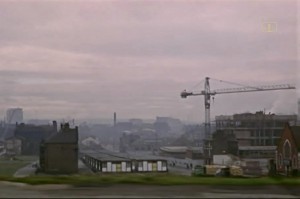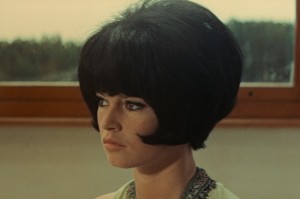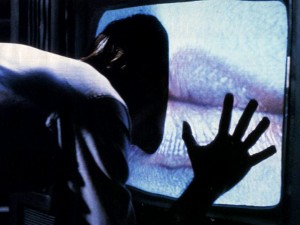Aesthetica Short Film Festival – Reviewed
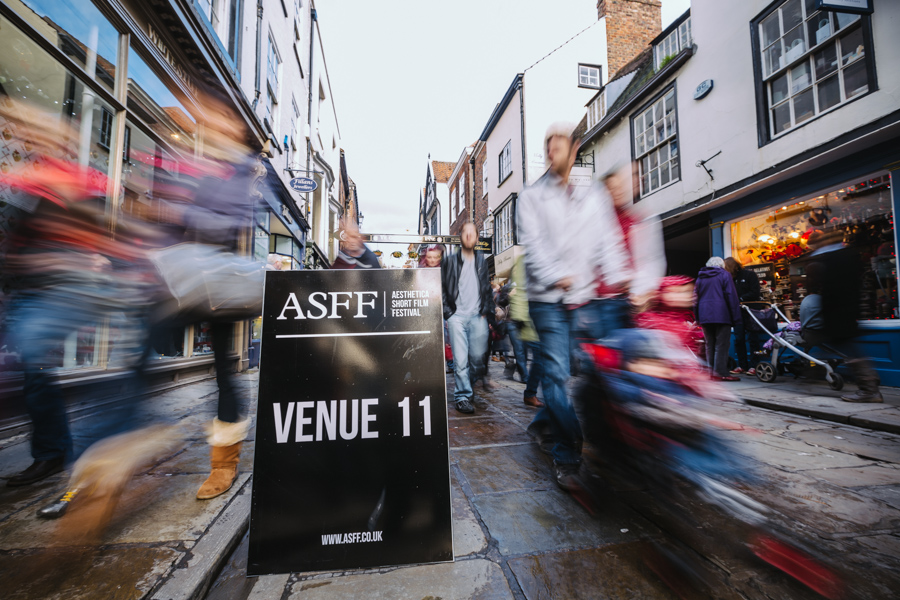
Film Festival first-timer, Toby Hood reports backs from York and ASFF…
York was bright and clear, the slight autumnal chill allowing for the addition of people’s best winter woollies, saw treasured knitwear bobbing around the beautiful backdrop of an historic city.
I’m here for Aesthetica Short Film Festival, hosted by a range of locations in the city centre – from chic boutiques and bars to 14th century alters and up-to-the-minute university lecture spaces. An overwhelming amount of attendees – a fact hard to ignore in the smaller venues – rubbed shoulders, literally, with film-makers.
Fittingly, there certainly was a festival atmosphere about the event; conversation flowed easily between industry experts and novices. I myself was fortunate to talk to director Mia Mullarkey about the difficulty of knowing when a project is finished and the danger of over-tweaking.
“I’m disconnected from it now,” she says of her documentary, Danger Overhead Powerlines. “There are many things I would like to change, but it takes ages to edit which is a world of pain.”
Of all genres showcased here, documentary proved the most consistently entertaining category; Kamil Krolak’s Fifty People One Question was as provocative as its title, begging the response “what’s the question?”
As the people of Galway were asked “what is your biggest life regret?” the audience were inclined to consider their own life’s failings; a testament to the directness of the genre. Whilst Neath Films’ Crossing the Divide offered a refreshing take on the Troubles in Ireland from the point of view of the deaf community.
This block of screenings ended with Oliver Murray’s off-beat Treasure, following a fanatical metal-detector enthusiast as he practices a forgotten past-time, showing that eccentricity can be dealt with as well as important issues.
My festival experience actually began watching music videos playing in the fashionable White Stuff store. A shop, my program tells me, that ‘houses a relaxing nine-seater cinema.’ Relaxing for those who acquired a seat, disgruntled sighs and shuffling of feet relayed the message that the rest of us were not, in fact, relaxed.
The quality of the films themselves, and this is reflective of the entire weekend, were varied. Among the less original concepts, there were those that offered something unique to the genre. The Long Dead Sevens’ Mother’s Song, directed by Linda McCarthy, is a brilliant piece of film, putting stop-motion animation to great use in its portrayal of a dark and haunting narrative.
Another favourite was Magma by Spanish CGI team Dvein, which incorporated a powerful visual interpretation to the orchestral sounds of ensemble The Vein.
Disappointingly, the Experimental section of the festival did not rise to the challenge of showcasing film that was unique but accessible. Christopher Ian Smith’s Arterial offered an easy-to-digest narrative, but was predictable in its thematic conclusions; the Wormell family’s A Roost For Every Bird struck the audiences’ funny bones, but relied on repetition; and the confusing, documentary-style Untitled by UK/Colombian collaboration, Anna Blandford and Anna Valdez Hanks, felt distracted and inconclusive.
Disillusioned, I leave for the BAFTA-selected shorts. These included a skin-crawling depiction of female exploitation in Morocco in The Curse, laugh-out-loud surreal comedy Tumult, and noteworthy BAFTA Short Animation winner The Making of Longbird.
In an age when more information is available about the filming process than ever before, The Making of Longbird provides a witty repartee between creator and created, as animator Will Anderson enters a dialogue with his character Longbird, who criticises his every sketch. In turn satirical and poignant, it’s nothing less than the manifestation of the pains of working creatively.
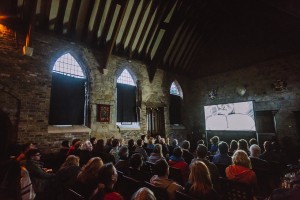
Medieval Barley Hall – a beautifully restored building, with all the expected period furnishings – established an appropriate sense of place on Saturday in confronting the themes of national identity for guest country Mexico’s collection of shorts.
Among them, Karla Castaneda’s stop-motion short La Noria incorporated unsettling visuals with a harrowing plot of child mortality, while Jose Yapur’s revealing Soldados de Juguete carried suggestions of Mexico’s perception of the English as a bunch of sociopaths.
Ex-pat Victor Orozco Ramirez commented on the violence of drug-trafficking in the South American state in his reflective piece Reality 2.0; a disjointed, animated narrative, the film’s underlying sentiment describes the narrator’s self-disgust of his voyeurism of a country he left behind.
Away from the screenings, Friday saw the arrival of some noteworthy names, as guest speakers were given the platform to share their experiences and advice with those aspiring to produce their own films – or simply those with an interest and spare £8.50.
One such masterclass came from comedy writer and actress Alice Lowe of Sightseers fame, here to discuss screenwriting techniques.
Stressing the importance of writing as part of a team, Lowe said: “Writing can make you feel alone and frustrated.” Continuing, she pointed out: “If you can find a muse as a writer that can be a real strength; collaboration is the strongest way to start.” Following her talk, the floor was opened up for questions and Lowe was asked about women in film.
“Women stories are quite a new thing; female characters become props for the males. It’s actually quite an annoying trope of cinema, the character of: ‘Oh boys, what are you like?’ – I get handed so many scripts like that.”
Then, responding specifically to the question with regards to comedy in particular, “There is an assumption that male writers make women funny. That’s why I started writing. I felt like some sort of fraud before I could say ‘Yes! I’m a writer, I’m a writer!’”
A hot-footed journey across town got you to the lecture-style class on documentaries from Sheffield Doc/Fest programmer, and general crowd-pleaser, Hussain Currimbhoy. He showed his pick of Doc/Fest’s latest screenings whilst lending his own thoughts about what makes a successful non-fiction film.
“Treat your subjects with humanity and respect. People in the big business forget that.” He also spoke of the issue of becoming distracted, stylistically as well as substantially. “Think about your style before – not during – you start shooting.”
Asked about the quality of the entries he receives as a festival programmer, he was refreshingly honest: “About eighty-five per cent of submissions are unwatchable for other human beings… Mother of God! The things I have seen.”
Currimbhoy ended his talk with his predictions for the future of the form. “Documentary is evolving, taking on another dimension.” He presented what he called The New Phase of interactive documentaries in the form of a website, where instead of a linear telling of events, audiences can choose which order they receive information.
This prompted my own query: “Will there always be a place for the more traditional, straight-forward documentary in the age of interactive films?” To which he responded: “The real question is: will there be film festivals in the future?”
Well, Hussein, let’s hope so because events like Aesthetica’s are inspiring in their demand for the audience to open their minds, and promoting the chance to really engage with the medium. And that is an experience no website alone can substitute; as much as we can try.
Toby Hood
Images courtesy Jim Poyner photography



